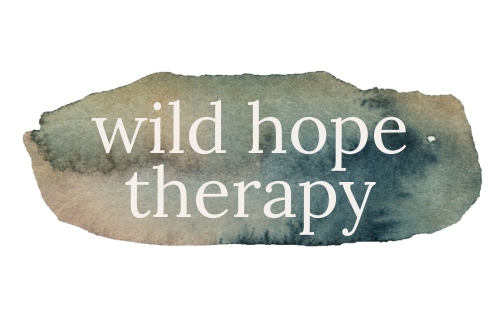When April Showers Bring More Than Just Flowers: Springtime Seasonal Affective Disorder
April is supposed to be a time of renewal—birds chirping, flowers blooming, sunshine coaxing us out of hibernation. So why does it feel like a wet blanket has been thrown over your mood? If you find yourself feeling low just as the world starts waking up, you’re not alone. Seasonal Affective Disorder (SAD) doesn’t always stick to winter, and for some, spring can bring its own kind of emotional storm.
If you find yourself feeling low just as the world starts waking up, you’re not alone.
What Is Seasonal Affective Disorder, Really?
Seasonal Affective Disorder (SAD) is a form of depression that follows a seasonal pattern, often triggered by changes in light and weather. Most people associate it with the long, dark winter months when sunlight is scarce, but for some, symptoms reappear or intensify in spring. And if April’s gray, rainy days hit you harder than expected, you might be experiencing a lesser-known version of SAD.
SAD isn’t just “winter blues” or being a little moody about the weather. It’s a legitimate mental health condition that can cause fatigue, low energy, irritability, trouble concentrating, changes in sleep and appetite, and an overall feeling of emotional heaviness. And while the winter variety of SAD is linked to a lack of sunlight and vitamin D, springtime SAD has its own unique causes—shifts in daylight hours, unpredictable weather, and even the pressure to suddenly feel “better” just because it’s spring.
Why Does Springtime SAD Happen?
It might seem counterintuitive—shouldn’t longer days and warmer temperatures make us feel better? But for some, the transition into spring is just as disruptive as the transition into winter. Here’s why:
Unstable Weather = Unstable Mood: One day it’s warm and sunny, the next it’s dark and pouring. This unpredictability can make it hard to feel emotionally stable, especially if you’re sensitive to changes in your environment.
More Light, But Not Always More Energy: While winter SAD is often linked to too little sunlight, spring SAD can be tied to too much. Longer daylight hours can disrupt sleep cycles, throwing your internal rhythms out of balance.
Pressure to Feel “Better” Just Because It’s Spring: There’s an expectation that spring should bring renewed energy and motivation. But if you’re still feeling low, that contrast can make your mood dips feel even more frustrating.
Spring Isn’t the Same for Everyone: If spring carries difficult memories, grief, or unresolved emotions, the season’s brightness can feel at odds with how you’re actually feeling.
Your Feelings Are Completely Valid
Let’s just say it outright: It is completely normal for your mood to be impacted by the weather. Humans are not robots. We are creatures of the environment, and shifts in light, temperature, and atmosphere affect our brains more than we realize. So if gloomy skies and unpredictable downpours make it harder to get out of bed, you’re not weak, lazy, or “making it up.” You’re responding to real biological and emotional shifts. And, most importantly, you deserve compassion for that.
How to Take Care of Yourself When Spring Feels Heavy
If the rainy season has you feeling off, there are ways to support yourself without forcing fake cheerfulness or pretending everything’s fine. Here are a few ways to care for yourself during a springtime slump:
1. Adjust Your Expectations (And Give Yourself Grace)
Spring isn’t all sunshine and blooming flowers—it’s also storms, mud, and unexpected cold snaps. The same goes for your emotions. You don’t have to feel energized just because it’s April. Instead of holding yourself to some imaginary standard of springtime happiness, let yourself exist exactly as you are.
Try this: Swap “I should be feeling better” for “I’m allowed to feel exactly how I feel.” Give yourself permission to move through the season at your own pace.
2. Bring in Small Comforts
If the weather outside feels unpredictable, focus on creating a sense of stability in your environment. Small, intentional comforts can go a long way in making you feel more grounded.
Try this: Light a candle that smells like warmth (vanilla, cinnamon, or something cozy). Listen to a favorite album. Wear a sweater that feels like a hug. Tiny moments of comfort matter more than we realize.
3. Move in Gentle Ways
You don’t have to run a 5K to “shake off” a low mood (and honestly, forcing yourself to exercise when you’re exhausted is the opposite of self-care). Instead, focus on gentle movement that honors where you’re at.
Try this: Stretch in bed before you get up. Take a slow, meandering walk between rain showers. Put on a song and sway for two minutes. Movement doesn’t have to be intense to be effective.
4. Find Connection (Without Forcing Socialization)
Feeling down can make it tempting to withdraw, but gentle connection—whether with people, animals, or even nature—can be healing. The key is to seek connection in ways that don’t feel forced.
Try this: Send a “thinking of you” text to a friend, even if you’re not up for a full conversation. Cuddle a pet. Sit on your porch and watch the world move. Connection can be quiet and subtle but still deeply meaningful.
Everything Has a Season
If you’re struggling through the rainy season, know this: All emotions, just like the weather, are temporary. Storms come and go. Even when it feels like the gray will never lift, it will. The low moments in life often remind us of what truly matters—what we long for, what we need, and what brings us comfort.
Spring is a season of transition, and transitions are rarely smooth. You don’t have to force yourself into joy before you’re ready. Just like the flowers know when to bloom, you’ll find your way back to yourself when the time is right. Until then, be gentle with yourself. Rest when you need to. And remember—the rain always passes, and so will this.

